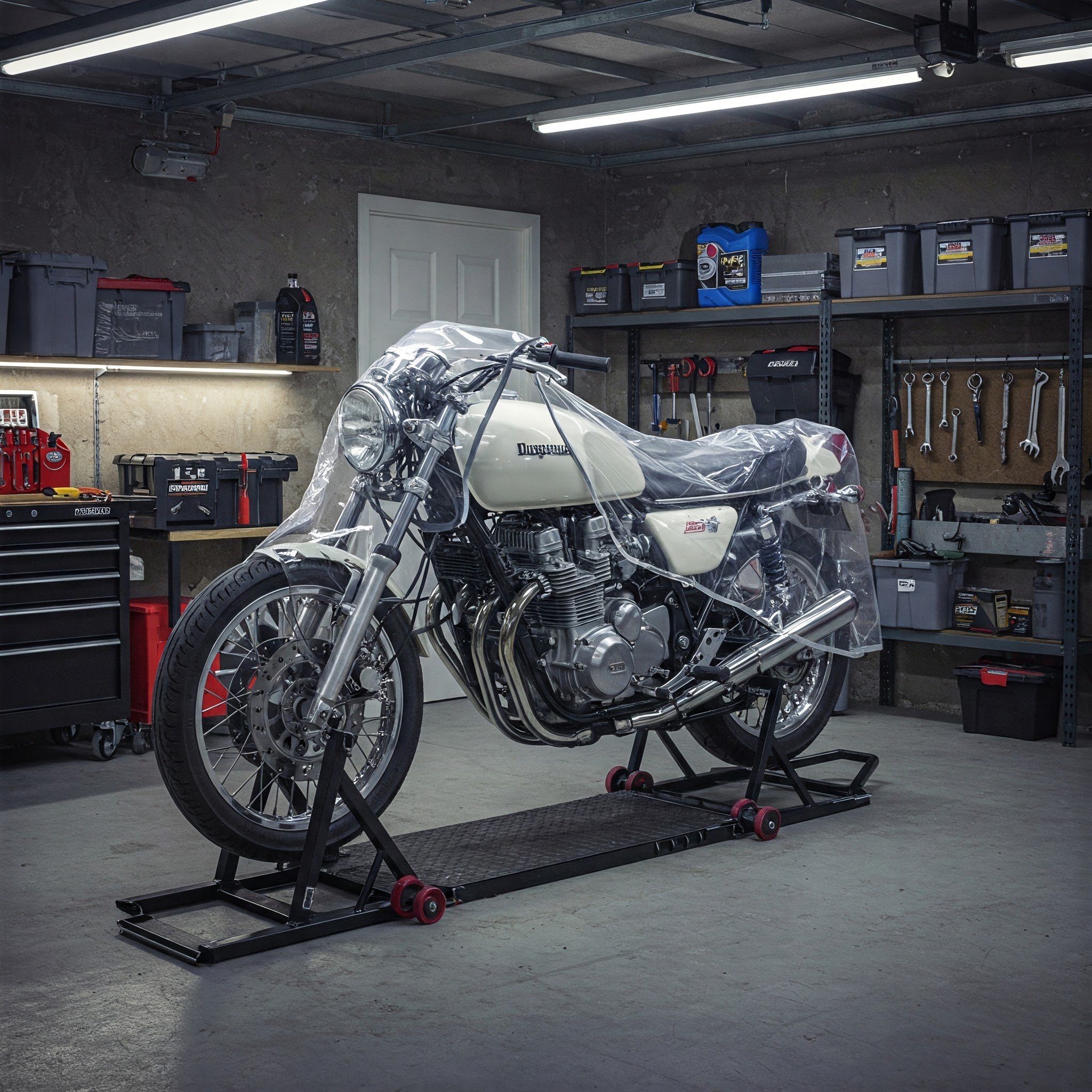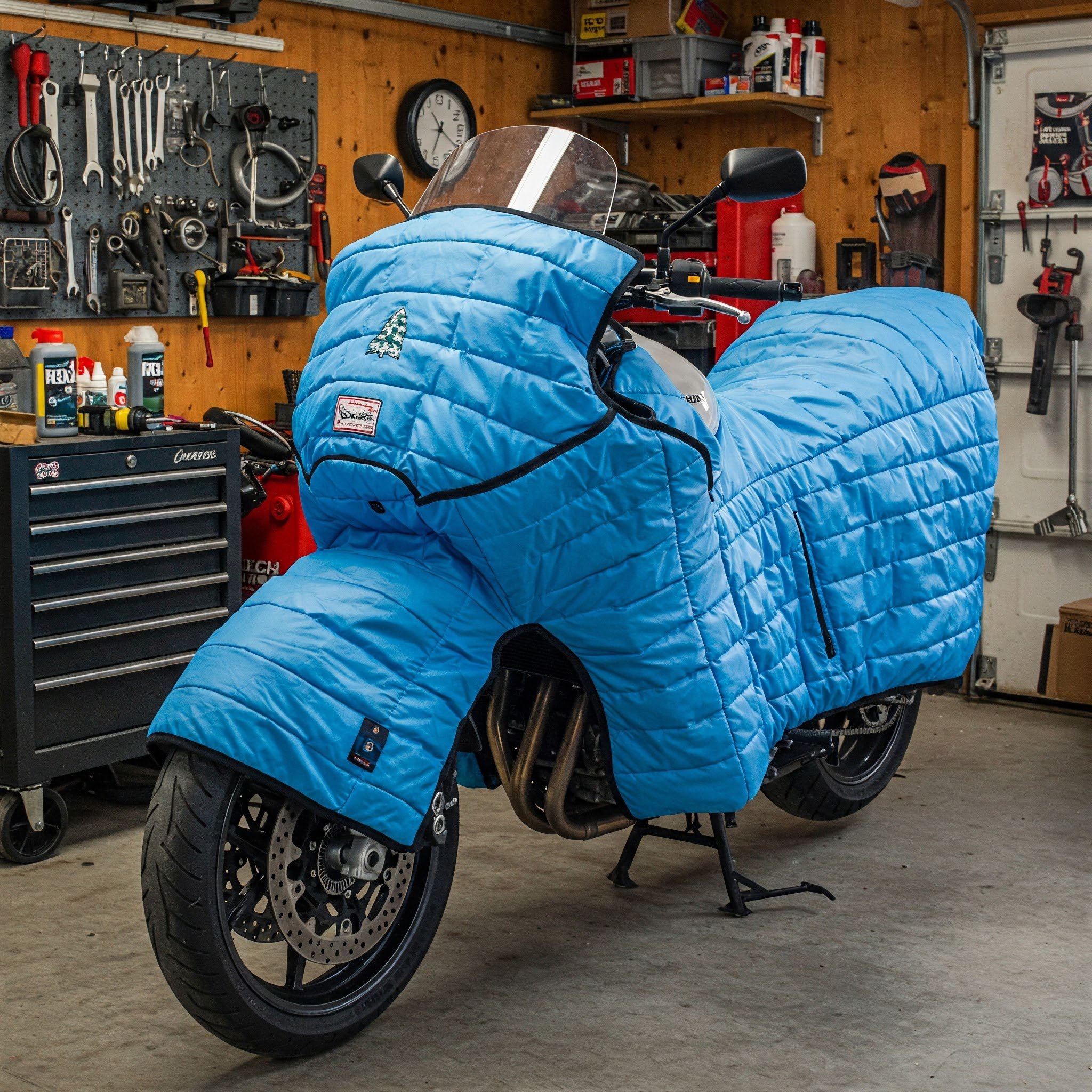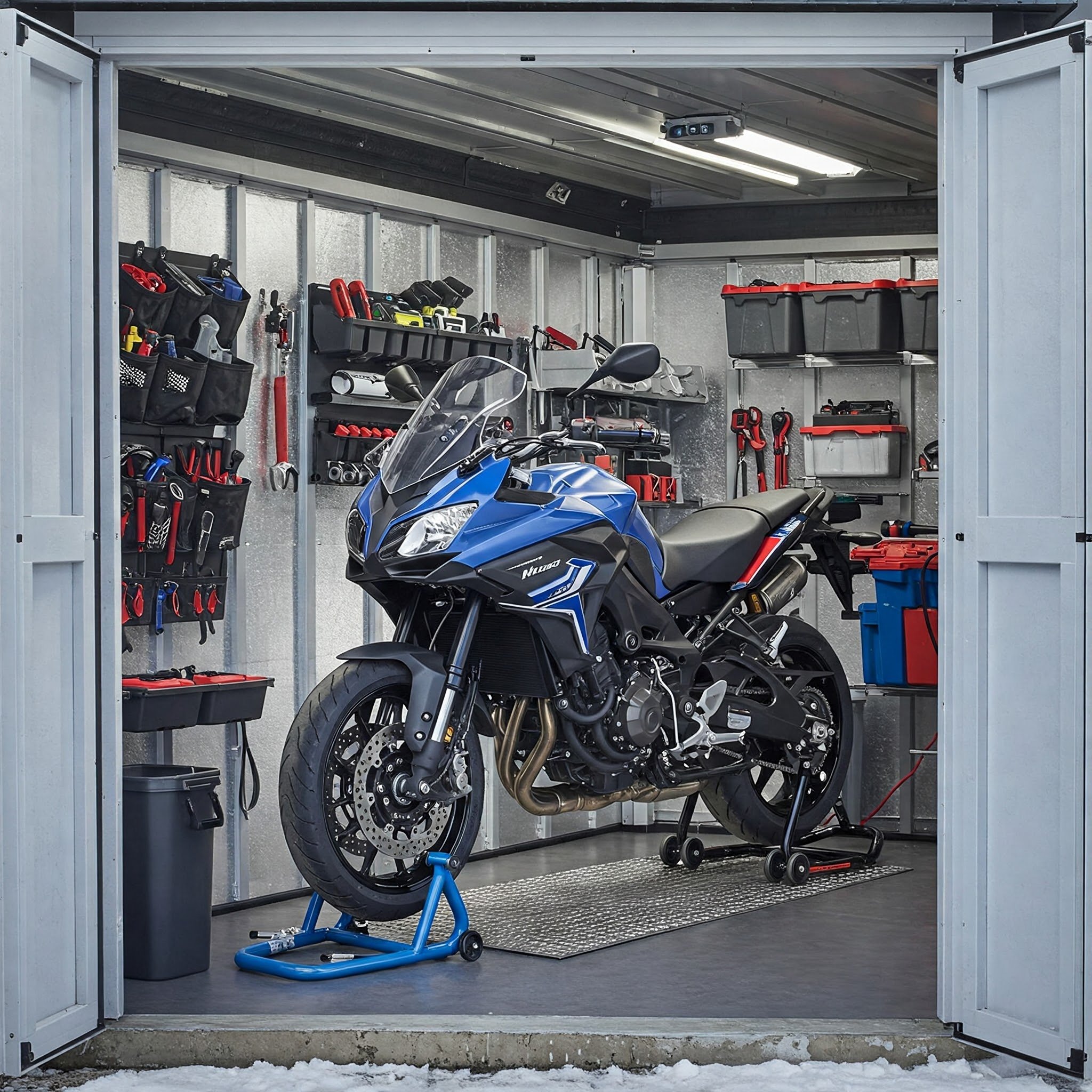How to Store Your Motorcycle for Winter
Discover the ultimate guide on How to Store Your Motorcycle for Winter. Packed with expert tips, step-by-step instructions, and maintenance tricks, this article will help you keep your bike in top shape during the frosty months.
When the chilly winds start blowing and the leaves turn gold, many riders find themselves asking, "How on earth do I get my bike ready for winter?" Trust me, you're not alone! Storing your motorcycle for winter isn’t just about tucking it away in a dusty garage—it’s a full-on ritual that can save you heaps of trouble (and money) when spring comes knocking. In this guide, we're diving headfirst into the nitty-gritty of winter storage. We'll walk you through everything from cleaning and maintenance to battery care and tire storage, all served up in a friendly, conversational tone. So grab a warm cuppa, sit back, and let’s get cracking on the ultimate guide on How to Store Your Motorcycle for Winter.
Why Proper Winter Storage Matters
Winter can be as harsh on your motorcycle as a surprise downpour on a summer day. Without proper storage, rust, fuel degradation, and battery damage can turn your beloved ride into a costly repair project. Here’s why prepping your bike for winter is a must:
Preventing Rust and Corrosion: Moisture and cold temperatures can cause metal parts to corrode.
Battery Preservation: Batteries naturally lose their charge in cold weather if not properly maintained.
Fuel Quality: Stale fuel can gum up your engine, leading to performance issues come spring.
Tire Health: Tires can become brittle and develop flat spots when left in the cold.
In short, a bit of prep now means a smoother, more reliable ride later. And who wouldn’t want that?
Pre-Storage Checklist
Before you even think about tucking your bike in for the winter, there's a laundry list of must-do tasks. Think of it as a recipe for success—you wouldn’t bake a cake without all the ingredients, right?
1. Thorough Cleaning and Drying
Wash Your Bike: Give your motorcycle a thorough wash to remove dirt, grime, and road salt.
Dry It Completely: After washing, dry your bike meticulously. Any leftover moisture is just begging to cause rust.
Polish and Wax: Apply a coat of wax to protect the paint and metal surfaces.
2. Fuel System Prep
Top Off the Tank: A full tank minimizes condensation inside the tank.
Add Fuel Stabilizer: Mix in a fuel stabilizer to prevent the fuel from breaking down over time.
Run the Engine: Let the stabilized fuel circulate through the system by running the engine for a few minutes (if weather permits).
3. Battery Care
Remove or Maintain: If possible, remove the battery and store it in a warm, dry place. If not, consider using a battery tender.
Clean the Terminals: Make sure the battery terminals are clean and free of corrosion.
4. Lubrication and Oil Change
Change the Oil: Old oil can contain contaminants. An oil change before storage is highly recommended.
Lubricate Moving Parts: Grease the chain, cables, and other moving parts to prevent rust.
5. Tire Maintenance
Inflate Properly: Ensure tires are inflated to the recommended pressure.
Tire Positioning: If possible, elevate the bike to prevent flat spots or rotate the tires periodically.
By following these steps, you’re setting up your bike for a trouble-free hibernation. It might seem like a lot, but think of it as investing in your motorcycle’s future. After all, a stitch in time saves nine!
How to Store Your Motorcycle for Winter: The Detailed Process
Now that we've covered the basics, let’s break down the process into manageable steps. Each phase plays a crucial role in keeping your motorcycle safe and sound during the cold months.
1. The Cleaning Ritual
Imagine your bike as a prized possession—wouldn’t you want it spic and span? Start by giving your motorcycle a good scrub. Use gentle cleaning agents that won’t strip away the protective coatings. And don’t rush! Rinse thoroughly and pat dry with soft towels. For the trickier parts, a can of compressed air can be a lifesaver.
Pro Tips:
Detailing Brush: Use a soft-bristle brush for those intricate details.
Microfiber Cloths: They’re gentle on surfaces and super absorbent.
Avoid High-Pressure Hoses: These can force water into sensitive areas.
2. Fuel Stabilization and Engine Care
If you’re wondering how to store your motorcycle for winter without turning it into a fuel goner, here’s your answer: stabilization is key. By adding a fuel stabilizer, you prevent the breakdown of fuel components, which could otherwise cause gum deposits or blockages in your engine.
Step-by-Step Fuel Prep:
Fill ‘er Up: Make sure your tank is full to reduce air pockets.
Add Stabilizer: Follow the instructions on your stabilizer bottle.
Circulate the Mixture: If conditions allow, start your bike for 10-15 minutes to ensure the stabilizer reaches every nook and cranny.
3. Battery Bliss
Your battery is the heart of your motorcycle, so treat it like gold during winter. If you’ve got the space, remove it and store it in a place where the temperature remains stable. Otherwise, invest in a battery tender. These nifty devices keep your battery charged at a constant rate, preventing it from losing juice.
Battery Tips:
Clean Contacts: A quick wipe with a battery cleaner can do wonders.
Regular Checks: Even during winter, a periodic check can save you a headache later.
4. Lubrication and Protection
A well-lubricated bike is a happy bike. After an oil change, make sure every moving part gets the attention it deserves. Don’t forget the chain—if you neglect it, rust can sneak in before you know it!
Checklist for Lubrication:
Chain: Use a high-quality chain lubricant.
Cables and Levers: A dab of grease goes a long way.
Suspension Components: Light oil can help maintain smooth operation.
5. Tire TLC
Tires can be a real pain in the neck if you don’t pay attention. To avoid flat spots and ensure your tires don’t dry out, store your bike on a stand or hang it if possible. If your storage space is limited, consider inflating the tires a bit more than usual (but don’t overdo it!).
Tire Tips:
Stand or Lift: Helps to keep the tires round.
Cover the Tires: Use breathable covers to protect them from dust and moisture.
6. The Ideal Storage Spot
Location, location, location! Your motorcycle’s winter home should be dry, clean, and free from extreme temperatures. Garages are perfect, but if you’re storing it outside, invest in a sturdy cover. A breathable cover is ideal because it allows moisture to escape while keeping dust and debris at bay.
What to Look for in a Storage Spot:
Dry Environment: Avoid damp basements or areas prone to flooding.
Stable Temperature: Extreme fluctuations can harm sensitive components.
Security: Make sure your bike is safe from potential theft or vandalism.
Additional Tips and Tricks
Even seasoned riders might overlook a few little nuggets of wisdom when preparing their motorcycle for winter. Here are some extra tips that can make your life a heck of a lot easier:
Document Your Work: Snap some photos of your bike’s condition before and after the prep work. It’s great for insurance and peace of mind.
Cover It Up: A high-quality cover not only keeps out dust but also deters critters from making a home on your bike.
Pest Prevention: Place a few mothballs or rodent repellent sachets around the storage area to keep unwanted visitors at bay.
Regular Check-Ins: If possible, pop in on your motorcycle every month to check for any issues that might arise.
These little extras can save you from big headaches later. After all, a little elbow grease now means you won’t be pulling your hair out come spring!
How to Store Your Motorcycle for Winter: Step-by-Step Recap
To wrap things up, let’s break down the process one more time with a handy numbered list. This will help you remember the key steps in storing your motorcycle for the winter season.
Clean Thoroughly: Wash, dry, and wax your motorcycle to prevent rust.
Fuel Stabilization: Fill the tank, add fuel stabilizer, and run the engine briefly.
Battery Maintenance: Remove or connect your battery to a tender and clean the terminals.
Oil and Lubrication: Change the oil, lubricate the chain, cables, and other moving parts.
Tire Care: Inflate the tires correctly and store your bike on a stand to avoid flat spots.
Proper Storage Environment: Choose a dry, temperature-controlled, and secure storage space.
Final Touches: Cover your bike and set up pest prevention measures.
Following these steps ensures that your motorcycle is well-protected throughout the cold months, ready to roar back to life once the frost melts away.
Conclusion
In a nutshell, knowing How to Store Your Motorcycle for Winter can be a game-changer for any rider who cherishes their two-wheeler. With the right preparation, a little bit of elbow grease, and some attention to detail, you can protect your bike from the harsh winter elements and ensure it’s ready to hit the road when the warmer weather returns. Sure, it might seem like a lot of work now, but trust me, future you will be grinning ear to ear when you fire up your engine in spring without a hitch.
Remember, it’s not just about stashing your motorcycle away—it’s about preserving your passion for riding. So, take a deep breath, roll up your sleeves, and get started on preparing your bike for its winter slumber. After all, a well-stored bike is a promise of thrilling rides and endless adventures in the coming season.
Keep this guide handy for every winter, and you’ll find that over time, the process becomes second nature. And if you ever need a refresher, you know where to look. Happy storing, and here’s to many more miles on your motorcycle when the snow melts away!
Frequently Asked Questions
1. What’s the best way to clean my motorcycle before winter storage?
Well, start by giving it a good scrub using mild soap and water. Be gentle, and don’t forget to dry it thoroughly. A soft cloth and a can of compressed air for hard-to-reach spots can make a world of difference.
2. Should I leave fuel in my tank during storage?
Absolutely! Keeping the tank full minimizes condensation, which is key to preventing rust. Just add a fuel stabilizer, and you’re all set.
3. Is it necessary to remove the battery from the motorcycle?
If you can, yes. Removing the battery and storing it in a warm, dry place is ideal. However, if space is an issue, using a battery tender is a solid alternative.
4. How often should I check on my motorcycle during the winter months?
It’s a good idea to inspect it every month if possible. This way, you can catch any potential issues before they become big problems.
5. What kind of storage location is best for my motorcycle?
The best spot is a dry, well-ventilated area with a stable temperature—like a garage. If you must store it outside, invest in a high-quality, breathable cover and secure the bike properly.
































